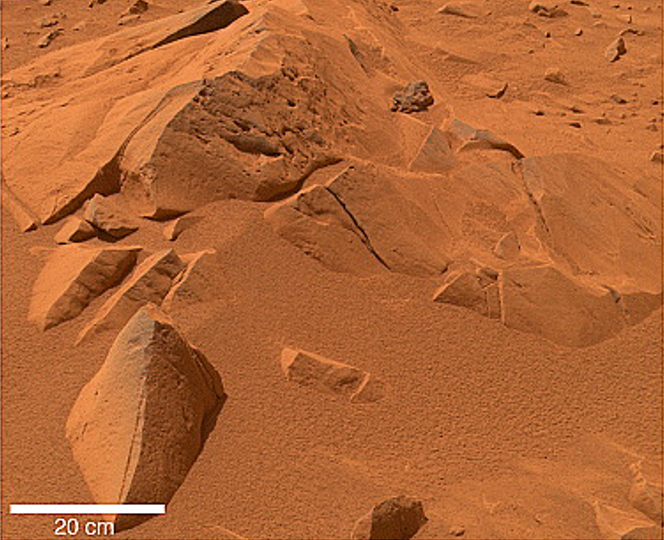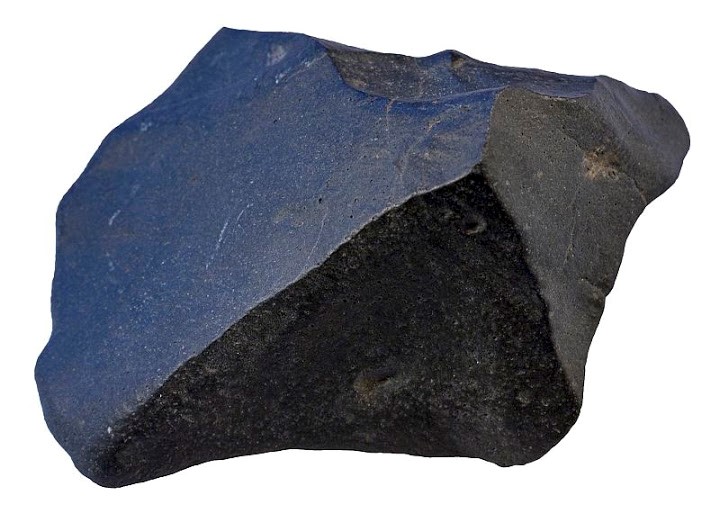'Z' is for Zweikanter
Written by Bryn Wood, A/Director of Research, Education, and Culture with the NunatuKavut Community Council
“And this our life, exempt from public haunt,
Finds tongues in trees, books in the running brooks,
Sermons in stones, and good in everything.”
(Shakespeare, “As You Like It”, 2.1.)
Memorial University once offered Geography 3495, “Geography of Labrador,” as a distance education course. The iteration of the course I completed was taught by Dr. Norm Catto, and the course manual included a detailed “Glossary of Labrador Geographic Terms.” At the end of this appendix to the course manual you will find the term “Zweikanter,” which refers to a clast (rock fragment) that shows two clear facets created by the action of wind-blown sand. Otherwise known as a well-polished pebble.
In completing the entry on this form of ventifact and including a brief description of its surroundings, I thought it might be novel to incorporate an A to Z coverage of related geomorphological terms to elucidate the topics of both zweikanter and Labrador geography.
The Labrador Encyclopedia is wholly dependent on the constructed idea of Labrador, which has come into being based on a number of complex factors, not the least of which being Geology. Plate tectonics have had an important part to play in forming Labrador, including Epeirogenic movement of the continents working in tandem with Thalassostatic shifts resulting from global climactic variability throughout geologic history. Through all of this change both physical and chemical Weathering work reliably to create the Labrador landscapes we are familiar with and a home for our Zweikanter.

Zweikanter observed by the Mars Exploration Rover Spirit. Adapted from
Greeley et al (2006). Gusev crater: Wind‐related features and processes
observed by the Mars Exploration Rover Spirit. Journal of Geophysical
Research: Planets, 111(E2).
The Laurentide Ice Sheet retreated from much of the Labrador area relatively recently at between 10 to 14 thousand years ago. Its presence left many lasting reminders on our visible landscape through the deposition of Quarried bedrock and other debris in Moraines, through englacial drift. Even below sea level there are massive landforms unique to glacial Sedimentation processes, such as laterally adjacent subsea tributaries or Yazoos that are part of the Northwest Atlantic Mid-Ocean Channel. Features such as these have not been identified in similar settings anywhere else in the world.
In other areas of Labrador, Jökulhlaup have helped shape glacial-Fluvial deposits and outwash areas above sea level, inundating the landscape to help create Kettle ponds. These Outwash fans or plains contain glacial Cobble from long dead Nunataks ground down to the very last Xenolith and provide an excellent setting for the production of future Ventifacts.
The Labrador coast is heavily influenced by the action of wind. Areas of high elevation are often subjected to high winds which discourage vegetation growth. This can result in well-scoured exposed rock that is open to weathering by Insolation. One specific windswept landscape that can be found in Labrador is the Porcupine Strand—which can be described as “Aeolian,” using a geomorphological lens. Often when we think of Aeolian settings we picture desert landscapes complete with a vast Erg proliferated with Barchan dunes. These Aeolian landscapes are defined by the effects of wind erosion and deposition and can include some fairly exotic landforms, such as Hoodoos, Yardangs, Rhourds and Dreikanter, which are a more common cousin of zweikanter.

Example of a Dreikanter https://www.sandatlas.org/ventifacts-and-dreikanters/
Similar, perhaps slightly less exotic linear dunes are also common along the Porcupine Strand and these are a good place to find wind-polished pebbles, as the dunes have low slopes that are exposed to onshore winds. If for some reason you are unable to find a zweikanter, Uniformitarianists may suggest waiting.
Key terms in the alphabet of Labrador geography, as explored by Bryn Wood:
Aeolian
Barchan
Cobble
Dreikanter
Epeirogenic
Fluvial
Geology
Hoodoos
Insolation
Jökulhlaup
Kettle
Laurentide
Moraines
Nunataks
Outwash
Plate
Quarried
Rhourds
Sedimentation
Thalassostatic
Uniformitarianists
Ventifact
Weathering
Xenolith
Yazoos
Zweikanter
References
Cantor, B. A., Kanak, K. M., & Edgett, K. S. (2006). Mars Orbiter Camera observations of Martian dust devils and their tracks (September 1997 to January 2006) and evaluation of theoretical vortex models. Journal of Geophysical Research: Planets, 111(E12).Hargitai H., Várkonyi P. (2015) Ventifact (Faceted Rock). In: Hargitai H., Kereszturi Á. (eds) Encyclopedia of Planetary Landforms. Springer, New York, NY. https://doi.org/10.1007/978-1-4614-3134-3_423
Catto, N. (2000). Geography 3495 – Geography of Labrador. Course Manual, 1st Edition. Memorial University School of Continuing Education. St. John’s, NL.
Dyke, A., & Prest, V. (1987). Late Wisconsinan and Holocene history of the Laurentide ice sheet. Géographie physique et Quaternaire, 41(2), 237-263.
Greeley, R., Arvidson, R. E., Barlett, P. W., Blaney, D., Cabrol, N. A., Christensen, P. R., ... & McLennan, S. M. (2006). Gusev crater: Wind‐related features and processes observed by the Mars Exploration Rover Spirit. Journal of Geophysical Research: Planets, 111(E2).
Laity, J. E. (2009). Landforms, landscapes, and processes of aeolian erosion. In Geomorphology of Desert Environments (pp. 597-627). Springer, Dordrecht.
Parks Canada http://parkscanadahistory.com/geology/guide/sec4.htm
Menzies, J., van der Meer, J. J., & Shilts, W. W. (2018). Subglacial processes and sediments. In Past glacial environments (pp. 105-158). Elsevier.
Maier, E., Zhang, X., Abelmann, A., Gersonde, R., Mulitza, S., Werner, M., ... & Stein, R. (2018). North Pacific freshwater events linked to changes in glacial ocean circulation. Nature, 559(7713), 241-245
Back to all Encyclopedia entries